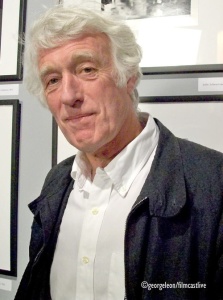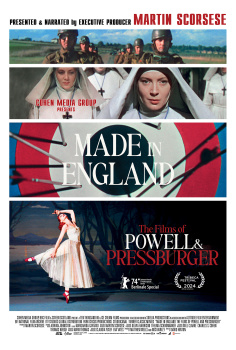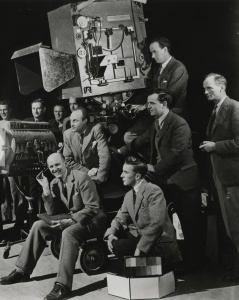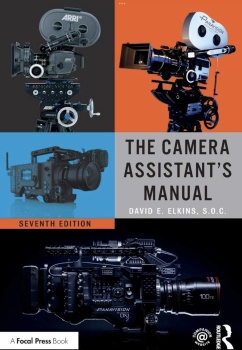 Some of Negrin's other television credits as a director of photography include episodes of the classic series McCloud, The Lucie Arnaz Show, The White Shadow, St. Elsewhere, Rhoda, Lime Street, Eischied, and Our Family Honor, as well as the telefilms Best of Friends,Dempsey,And Your Name is Jonah and Women at West Point. His feature film credits include The Concert for Bangladesh, Amazing Grace (1974), Proof of the Man, and Parades. He also contributed additionalcinematography to many feature films which included Crazy Joe, Superman, Coming to America, King Kong (1976), Jaws 2, Elodia (A Forgotten Tune for the Flute) and Robocop.
Some of Negrin's other television credits as a director of photography include episodes of the classic series McCloud, The Lucie Arnaz Show, The White Shadow, St. Elsewhere, Rhoda, Lime Street, Eischied, and Our Family Honor, as well as the telefilms Best of Friends,Dempsey,And Your Name is Jonah and Women at West Point. His feature film credits include The Concert for Bangladesh, Amazing Grace (1974), Proof of the Man, and Parades. He also contributed additionalcinematography to many feature films which included Crazy Joe, Superman, Coming to America, King Kong (1976), Jaws 2, Elodia (A Forgotten Tune for the Flute) and Robocop."Sol's work touched millions of people," says ASC Awards Committee Chairman Richard Crudo. "His peers in ASC are uniquely qualified to recognize and applaud his mastery of the art and craft of cinematography. His dedication to educating the next generation exemplifies the ASC's motto: Loyalty, progress, artistry."
Negrin was born in New York City in 1929 and graduated from the High School of Industrial Arts (now the High School of Art and Design), where he majored in art, photography and photoscience. He studied cinematography at City College Film Institute and took courses at the RCA Institute though the International Photographers Guild. "At first, photography was just a hobby," says Negrin. "I was hoping to be a naval architect, but my math was not up to par."
While in school, Negrin took a part-time job that later became a full-time position with a commercial/industrial film company called Hartley Productions. He worked as an assistant cameraman from 1948 to 1960, often with renowned cinematographers including Torben Johnke, ASC, Jack Priestley, ASC, Lee Garmes, ASC, Joe Biroc, ASC, Leo Tover, ASC, Harry Stradling, Jr., ASC, Hans Koenekamp, ASC, Charles Lang, Jr., ASC, Charles "Buddy" Lawton, ASC, Mario Tosi, ASC, Joseph Brun, ASC, and Boris Kaufman, ASC.
Negrin subsequently stepped up to camera operator on the mainstream television series The Naked City, The Defenders, Car 54, Where are You?, and The Patty Duke Show; and feature films ranging from Frankenstein Meets the Spacemonster to Where's Poppa?, and Across 110th Street.
"I enjoyed collaborating closely with directors to achieve a mutual understanding about lighting and composition in order to make their films as interesting and exciting as possible," says Negrin. "Satisfaction came from knowing I had done my very best."
 Conversation with Sol Negrin, ASC
Conversation with Sol Negrin, ASCWhen did you realize you wanted to be a cinematographer?
My father was in the garment business, which I detested. I was going to a New York public school that was a prep high school because I wanted to be a naval architect. I used to build boats and design my own things at home. I wanted to get into the Naval Academy or Webb Institute because those were the two schools that taught naval engineering or architecture. As it turned out, my math skills weren't good enough. I had a grade advisor who asked whether I had an avocation. I told him that I liked photography, and he suggested I pursue that. It was good advice. I took the exam for the High School of Industrial Arts and passed. I showed some of my artwork, and I got in. It was the only school that taught still photography and motion picture filmmaking as well, and I gravitated to the film work. I shot short films for the school, which had a lot of Army surplus equipment, including 16mm Cine Special cameras.
How did your professional career begin?
Negrin: I got a job while I was still in high school, but it was darkroom work and I didn't like it. I stayed there part time for two months, and then started knocking on doors, including Hartley Productions, a company who produced industrial films and commercials for Pan Am Airways, Irish linens, and about a dozen other businesses. Hartley also had produced many training films for the government during the war. They gave me a part-time job. I started off at $5 a week sweeping the floor and doing anything to learn about film production. This was my internship. I gradually moved up, and after a year and a half I was an assistant cameraman. After I graduated high school, I started working full time at Hartley Productions. I got a ground-floor, hands-on experience about everything related to 16mm and 35mm filmmaking. I worked on commercials, documentaries, industrial film and, eventually, feature films and television.
As an assistant, you worked with some of the most renowned ASC cinematographers, some of them from the silent and early sound eras, including Lee Garmes, Charles Lang, Jr. and Hans Koenekamp, to name a few. What did you learn?
Negrin: I worked with cinematographers from the silent and early sound era. The best part about being an assistant is that you get to observe. From Lee Garmes, I learned simplicity. He had an eye for composition and good taste. He knew his diffusion. He was a master in every respect. I worked with Hans Koenekamp on some visual effects shots for Damn Yankees. He really knew his effects, and was a master lighting cameraman as well. With Charles Lang, Jr., we were doing a shoot where Joan Crawford spoke to stockholders of the Pepsi-Cola company, which she had taken over from her late husband. In this company informational film, Charlie photographed her as if it were a feature film using all the diffusion nets and glass as needed. She was always concerned about her neck, and he had a finger net over the key light that cut across her neck so it wasn't so pronounced. Working with Charles Lang, Jr., was an education. Boris Kaufman was from a different generation; he was a master of hard light. Like Harry Stradling, Sr., he knew how to use one large source and make that lamp do the work of many. He had a European sense of composition and depth. Some of what Boris did in On the Waterfront reminds me of Gregg Toland's work on Long Voyage Home.
You were working at MPO and Filmex when the television commercial as we know it today was being invented. What are your memories of that time?
Negrin: MPO was the MGM of commercials. I was an assistant. There was a lot to learn, and the work was steady and paid well. I learned a lot, but it could be exasperating work. I traveled a great deal. Later, after I had become a director of photography, I was on staff for three years at Filmex. Often, I flew to California on Monday and took the red eye home on Friday to be with my family on the weekends.
You have a close friendship with Torben Johnke. How did that come about?
Negrin: I worked with him as an assistant when he first arrived in this country from Denmark, and later I worked for him as a director of photography when he became a producer and director. He was one of my mentors. It was nice that he remembered and hired me. He had his own techniques, and he taught me a lot. We're still friends, and I see him whenever I get to Toronto. I worked with Torben on one of the last Technicolor monopack films. It was at the old Fox Studios on 53rd Street. We had the Bell Telephone Orchestra with about 70 musicians. The film was actually Kodakchrome reversal. When it was processed, they made three strips out of it. It was the forerunner to Eastman color negative monopack film. The exposure index was 10 or 12. There were so many arc lamps that they had to bring in projectionists to operate them because there weren't enough electricians who knew arc lamps. We needed 1,200 footcandles just to get a T2.8 exposure. We were photographing the well-known violinist, Zino Franciscotti. It was a dolly shot into a close-up of the bow and strings of his violin, and because of the heat of the lights, we thought the violin might be damaged. It was a very difficult shot. We had to wait for the dailies because the film had to be sent to California to be processed. We were biting our fingernails, hoping it was in focus. We had been promised a new BNC camera checked out by Technicolor to be sure it met their specs, but the delivery was late, so we had to use an older Mitchell Standard, which had to be put in a blimp that made it very cumbersome. But, we did the picture with it, and I was proud that it went smoothly, with no problems. It was quite an experience.
During the 1970s, you were photographing Kojak, one of the most popular television shows of that era. Your work on that show led to three of your five Emmy nominations. What are some of your memories?
Negrin: While shooting Kojak in New York, I worked with many different directors and often received their praise for a job well done. Part of our task was to capture the flavor of New York City. While working with these directors, I absorbed many of their techniques in order to produce the best visual images. I enjoyed collaborating closely in order to achieve a mutual understanding about the lighting and composition in order to make each story as interesting and exciting as possible. The Emmy nominations were very gratifying, but my greatest satisfaction came from knowing I had done my best.
By the 1980s, you were shooting with modern, fast film stocks and other improved technology. What's your take on the relationship between technology and creativity?
Negrin: The changes have been dramatic, but I don't envy the new people coming into the industry. They have to learn and absorb so much new technical knowledge to make things work in order to capture the vision they are trying to achieve. Because of the camera equipment required or used for film, I find film more user friendly. With digital, each camera is different, and before you realize it, the camera may become obsolete. There's a different workflow for every project. I, personally, am still partial to film. Film has its own distinctive look and is still a different palette. It's more organic. There is a different feel and look to the image itself. Creativity will always be intertwined with any new technology.
What has membership in the ASC meant to you and your career?
Negrin: In 1942, I read my first issue of American Cinematographer, which featured many well known and fine cinematographers of the time. I knew at that moment that I wanted to be an ASC member, and that became my aspiration. The day that I was accepted as a member was one of the most memorable times of my life. The camaraderie of being in the company of such talented individuals is something I never expected. To receive this award from such a distinguished society means so much to me. I'm honored and very happy.
You spend a lot of time and energy teaching tomorrow's filmmakers. What is your advice to them?
Negrin: Learn all you can. Every day is an education. You have to keep up. Absorb it all. It's a very competitive profession. Some of my students are still very much into the film process, and I'm delighted by that. We teach both worlds – film and digital. There is always something new on the horizon, and you have to learn to adapt. That's the way it's always been, from the silent era to the sound era, from black and white to color. What remains the same is that it continues to be and is all about the visual image of storytelling.
About Sol Negrin
Negrin was a member of ADTFC/NABET from 1948 to 1952, when he became a member of Local 644 New York International Photographers Union, IATSE. He has been a loyal member of what is now the International Cinematographers Guild (ICG) for 57 years, and has served that organization in a wide variety of capacities, including president of the New York local. He has been a member of ASC since 1974.
Negrin often shares his wealth of experience and expertise with students and aspiring filmmakers through mentorships, seminars, demonstrations and speaking engagements. For the last decade, he has taught courses on cinematography and the evolution of filmmaking techniques at Five Towns College in Long Island, New York, where he earned an honorary doctorate of fine arts degree in 2002. He is also co-chair of the ICG Educational and Training Committees.
The ASC was chartered in January 1919. There are more than 300 active members of ASC, and 150-plus associate members from sectors of the industry that support the art and craft of filmmaking. Membership and associate membership is by invitation based on contributions that individuals have made to advance the art of visual storytelling.
For more information regarding the 24th ASC Awards, visit www.theasc.com
by Lisa Muldowney

























































